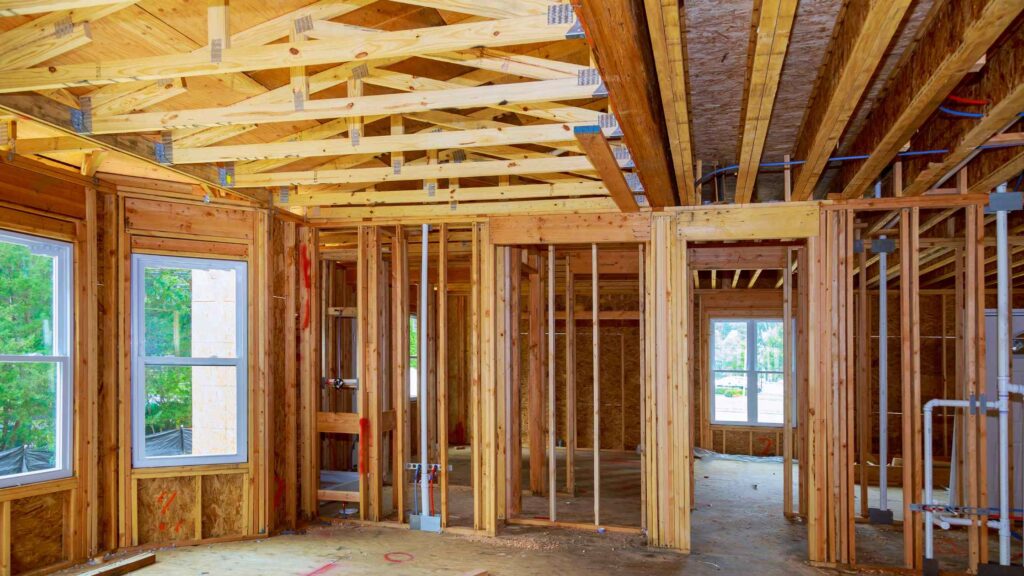The construction industry is a cornerstone of modern civilization, facilitating the development of both residential and commercial infrastructure. This vast sector is integral to economic stability and growth, creating numerous job opportunities and career paths for a skilled workforce. For students and professionals entering the trades, understanding the role of mathematics in construction can be both enlightening and critical. From excavation to framing and HVAC systems, math plays a pivotal role in ensuring structural integrity, efficiency, and functionality. This comprehensive exploration will delve into how mathematics is applied across various sub-trades in construction, illustrating its importance through practical examples.
The Role of Math in Excavation
Excavation is the foundational step in construction, quite literally. The process involves removing soil to prepare a site for the construction of a building’s foundation. Mathematics plays a crucial role in excavation, starting with volume calculations and equipment selection.
Volume Calculations
To determine how much soil needs to be removed, excavation professionals must calculate the volume of earth to be displaced. This involves understanding the dimensions of the excavation site, which are typically specified in architectural plans. The basic formula for calculating volume is:
Volume=Length×Width×DepthVolume=Length×Width×Depth
However, the process can become more complex if the excavation site has irregular shapes or slopes. In such cases, professionals might use calculus-based methods or approximation techniques to estimate the volume.
Expansion Coefficients
Soil can expand or contract based on moisture content and compaction. An expansion coefficient is used to adjust the calculated volume of soil. This coefficient varies depending on soil type and environmental conditions. For example, loose, sandy soil will expand more than clayey soil. Understanding how to apply these coefficients ensures that excavation is accurate and efficient.
Equipment Selection
The volume of soil determines the type and size of excavation equipment required. For large-scale excavations, heavy machinery like bulldozers and backhoes are used. For smaller projects, excavators or even manual tools might suffice. Proper equipment selection ensures that the excavation is completed efficiently and safely.
The Significance of Math in Framing
Framing forms the skeleton of a building, providing structural support and defining the shape and layout of the structure. Whether constructed from wood, steel, or concrete, framing requires precise mathematical calculations to ensure stability and adherence to design specifications.

In modern days, special software helps to create drawings and plans, but architects and engineers must be able to use their knowledge and understand/utilize mathematical formulas that go into such calculations. Often, roofs represent more complex shapes in terms of geometry – with various angles, slopes and dimensions combine to give each home a particular look and functionality. Framers are skilled tradesmen who will execute the plan relying on their knowledge of geometry and sizing of construction materials. One look at framing square reveals the degree to which math is used in framing!
Architectural Drawings and Geometry
Architects create detailed drawings that outline the dimensions, angles, and materials used in framing. These drawings are complex geometrical designs that require a solid understanding of geometry and trigonometry. For example, calculating the angles of roof trusses or the proportions of load-bearing walls involves geometric principles.
Material Sizing and Load Calculations
Framing materials must be sized correctly to support the intended loads. Structural engineers use formulas to calculate the load-bearing capacity of different materials, such as timber or steel. These calculations take into account factors like material strength, load distribution, and safety margins. The most common formulas used include: Load=Force×DistanceLoad=Force×Distance
For wood framing, engineers often refer to standardized tables that provide load capacities based on the size and type of wood. For steel framing, calculations involve more complex stress and strain formulas.
Roof Geometry
Roofs often feature complex geometries, such as pitched roofs, dormers, and skylights.
Framers need to understand these shapes and calculate angles, slopes, and intersections accurately. The framing square, a fundamental tool in carpentry, is used to measure and mark angles and dimensions with precision.
The Mathematical Foundations of HVAC Systems
Heating, Ventilation, and Air Conditioning (HVAC) systems are essential for maintaining comfort in residential and commercial buildings. The design and installation of these systems rely heavily on mathematical calculations to ensure efficiency and effectiveness.
Heat Loss Calculations
One of the first steps in designing an HVAC system is calculating the heat loss for a building.
This involves determining how much heat is lost through walls, windows, roofs, and floors.
The heat loss formula is:
Heat Loss=Area×U-Value×Temperature DifferenceHeat Loss=Area×U-Value×Temperature Difference where:
- Area is the surface area of the wall or window.
- U-Value represents the thermal transmittance of the material.
- Temperature Difference is the difference between indoor and outdoor temperatures.

Equipment Sizing
HVAC systems must be sized correctly to match the heat loss or gain of the building. This involves selecting equipment with appropriate heating or cooling capacities, measured in BTUs (British Thermal Units) or kilowatts. For example, a furnace’s capacity is determined based on the total heat loss calculation:
Furnace Capacity=Total Heat Loss ; Furnace Capacity=Total Heat Loss
Efficiency and Energy Conversion
Efficiency is a critical factor in HVAC systems. The efficiency of heating equipment, such as a furnace or boiler, is expressed as a percentage, representing the ratio of useful heat output to the energy input. Efficiency calculations help in selecting energy-efficient equipment and optimizing performance:
Efficiency=Useful Heat Output Energy Input×100%; Efficiency=Energy Input Useful Heat Output×100%
Ductwork Design
Ductwork design involves calculations related to airflow, pressure, and duct dimensions.
Engineers must ensure that air is distributed evenly throughout the building.
Key factors include:
- Volume Flow Rate: The amount of air passing through the ducts, measured in cubic feet per minute (CFM).
- Duct Size: Calculated based on airflow requirements and pressure losses.
- Pressure Losses: Determined using formulas that account for friction and other factors in the duct system.
Advanced Mathematical Applications in Construction
In addition to basic calculations, advanced mathematics plays a role in various aspects of construction. These include:
Structural Analysis
Structural analysis involves evaluating the strength and stability of a building’s framework.
Engineers use mathematical models and simulations to predict how structures will behave under different loads and conditions. Techniques such as finite element analysis (FEA) allow for detailed assessments of stress and strain in complex structures.
Project Management and Scheduling
Construction projects require careful planning and scheduling to ensure timely completion.
Project managers use mathematical methods to create timelines, allocate resources, and track progress. Techniques such as critical path analysis (CPA) and earned value management (EVM) help in managing project efficiency and cost.
Cost Estimation and Budgeting
Mathematics is essential in estimating construction costs and managing budgets. Cost estimators use formulas and historical data to predict expenses for materials, labour, and overhead. Accurate budgeting is crucial for ensuring that projects are completed within financial constraints.
Conclusion
Mathematics is deeply embedded in every aspect of the construction industry. From the initial excavation to the final HVAC system installation, precise calculations and mathematical principles are essential for successful construction projects. Understanding these applications not only enhances the efficiency and accuracy of construction practices but also highlights the importance of mathematical skills in the skilled trades.
For students and professionals pursuing careers in construction, a strong foundation in mathematics can open doors to a range of opportunities and advancements. As the industry continues to evolve with new technologies and techniques, the role of math will remain central to the success and innovation in construction.
See more interesting IntoMath Blog Posts

There are no comments yet